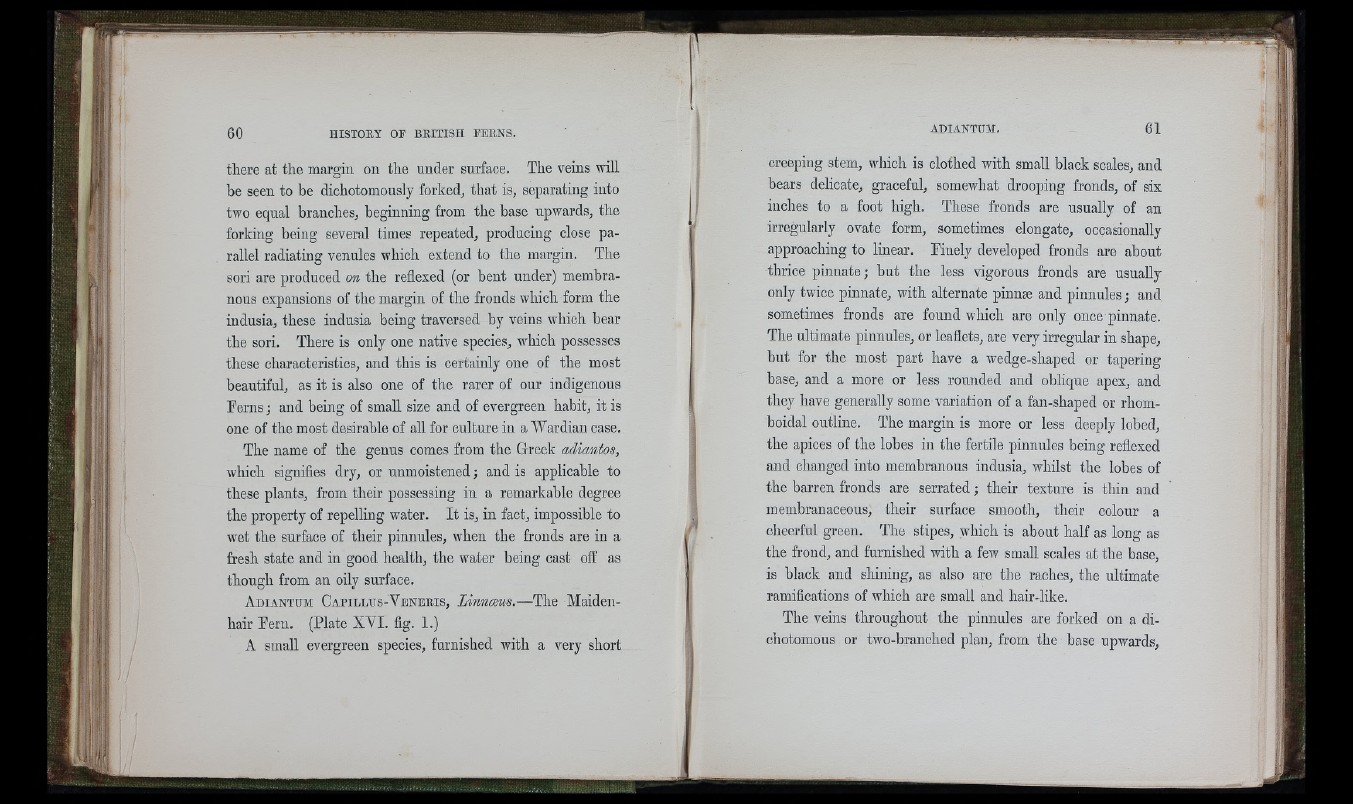
there at the margin on the under surface. The veins will
be seen to be dichotomously forked, that is, separating into
two equal branches, beginning from the base upwards, the
forking being several times repeated, producing close parallel
radiating venules which extend to the margin. The
sori are produced on the reflexed (or bent under) membranous
expansions of the margin of the fronds which form the
indusia, these indusia being traversed by veins wdiich bear
the sori. There is only one native species, which possesses
these characteristics, and this is certainly one of the most
beautiful, as it is also one of the rarer of our indigenous
Ferns ; and being of small size and of evergreen habit, it is
one of the most desirable of all for culture in a Wardian case.
The name of the genus comes from the Greek adiantos,
which signifies dry, or unmoistened ; and is applicable to
these plants, from their possessing in a remarkable degree
the property of repelling water. It is, in fact, impossible to
wet the surface of their pinnules, when the fronds are in a
fresh state and in good health, the water being cast off as
though from an oily surface.
A d ia n tu m C a p i l l u s -V e n e r i s , Linnoeus.—The Maidenhair
Fern. (Plate XVI. fig. 1.)
A small evergreen species, furnished with a very short
creeping stem, which is clothed with small black scales, and
bears delicate, graceful, somewhat drooping fronds, of six
inches to a foot high. These fronds are usually of an
irregularly ovate form, sometimes elongate, occasionally
approaching to linear. Finely developed fronds are about
thrice pinnate; but the less vigorous fronds are usually
only twice pinnate, with alternate pinnæ and pinnules ; and
sometimes fronds are found which are only once pinnate.
The ultimate pinnules, or leaflets, are very irregular in shape,
but for the most part have a wedge-shaped or tapering
base, and a more or less rounded and oblique apex, and
they have generally some variation of a fan-shaped or rhomboidal
outline. The margin is more or less deeply lobed,
the apices of the lobes in the fertile pinnules being reflexed
and changed into membranous indusia, whilst the lobes of
the barren fronds are serrated ; their texture is thin and
membranaceous, their surface smooth, their colour a
cheerful green. The stipes, which is about half as long as
the frond, and furnished with a few small scales at the base,
is black and shining, as also are the raches, the ultimate
ramifications of which are small and hair-like.
The veins throughout the pinnules are forked on a di-
chotomous or two-branched plan, from the base upwards,